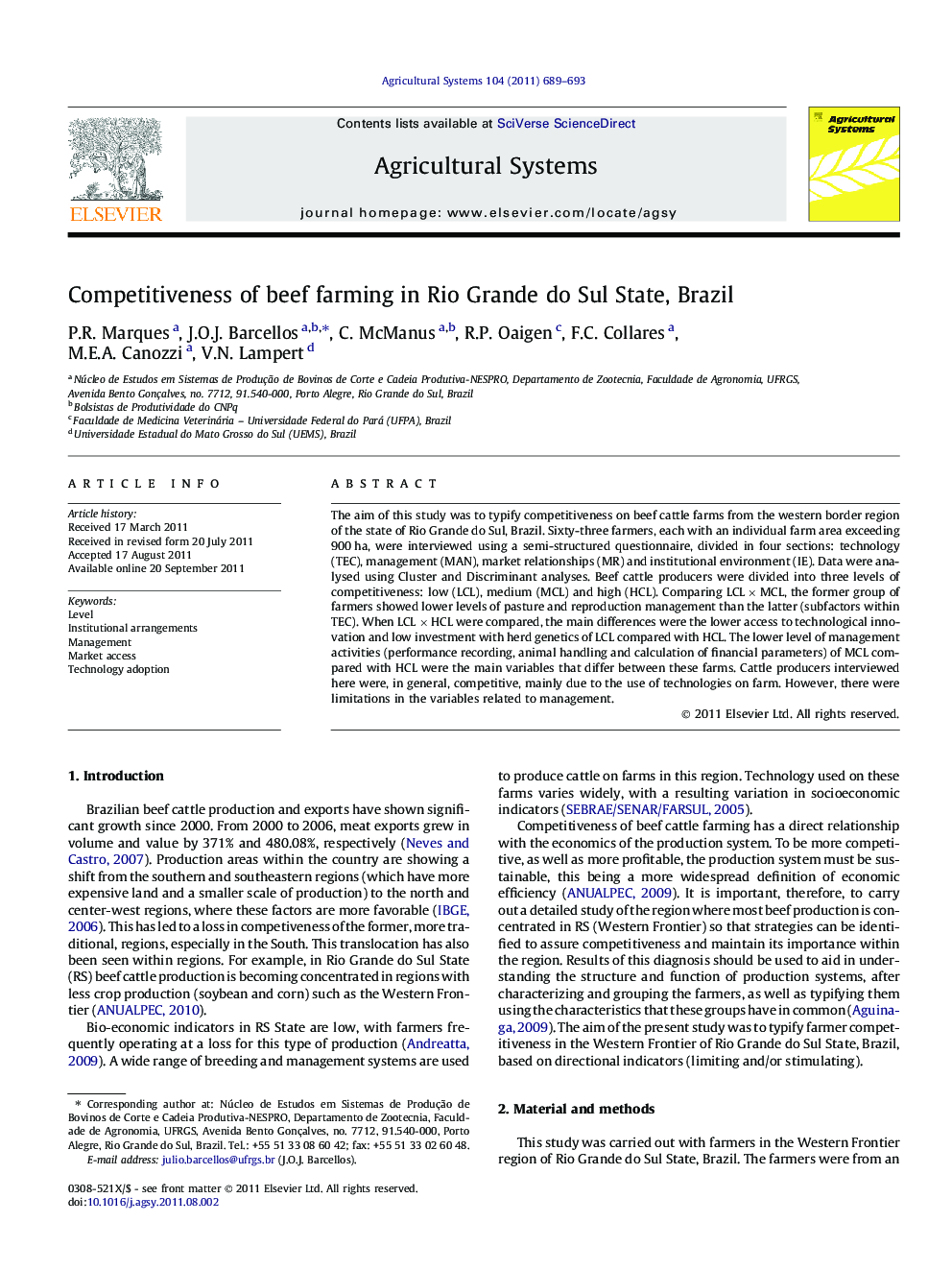| Article ID | Journal | Published Year | Pages | File Type |
|---|---|---|---|---|
| 4491453 | Agricultural Systems | 2011 | 5 Pages |
The aim of this study was to typify competitiveness on beef cattle farms from the western border region of the state of Rio Grande do Sul, Brazil. Sixty-three farmers, each with an individual farm area exceeding 900 ha, were interviewed using a semi-structured questionnaire, divided in four sections: technology (TEC), management (MAN), market relationships (MR) and institutional environment (IE). Data were analysed using Cluster and Discriminant analyses. Beef cattle producers were divided into three levels of competitiveness: low (LCL), medium (MCL) and high (HCL). Comparing LCL × MCL, the former group of farmers showed lower levels of pasture and reproduction management than the latter (subfactors within TEC). When LCL × HCL were compared, the main differences were the lower access to technological innovation and low investment with herd genetics of LCL compared with HCL. The lower level of management activities (performance recording, animal handling and calculation of financial parameters) of MCL compared with HCL were the main variables that differ between these farms. Cattle producers interviewed here were, in general, competitive, mainly due to the use of technologies on farm. However, there were limitations in the variables related to management.
► The technology favorably influenced competitiveness of the farmers. ► Improvements are possible mainly in terms of management strategies. ► Farmers at the medium level should invest in management of the production system.
